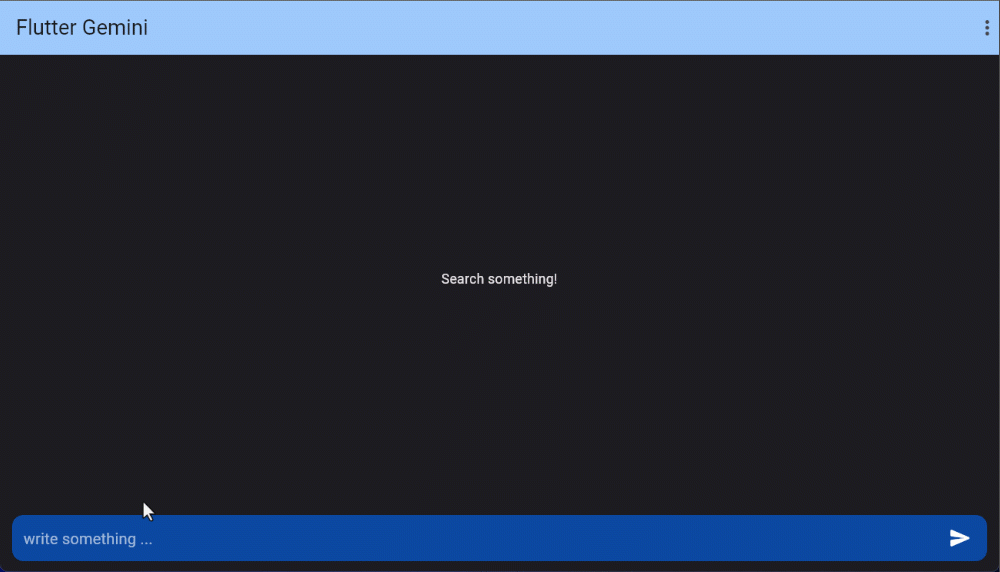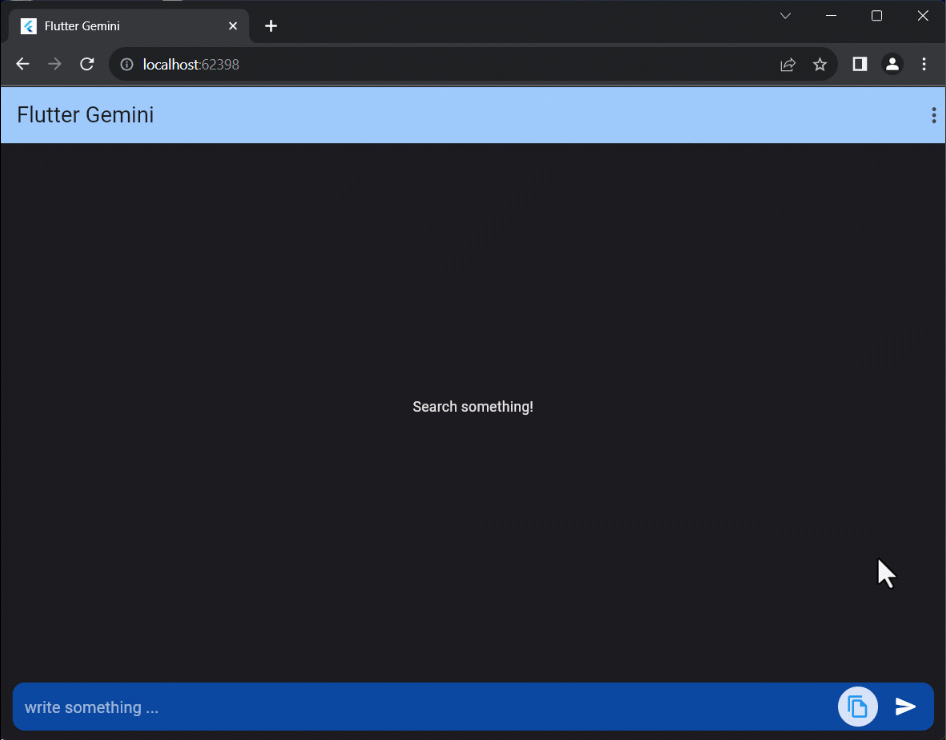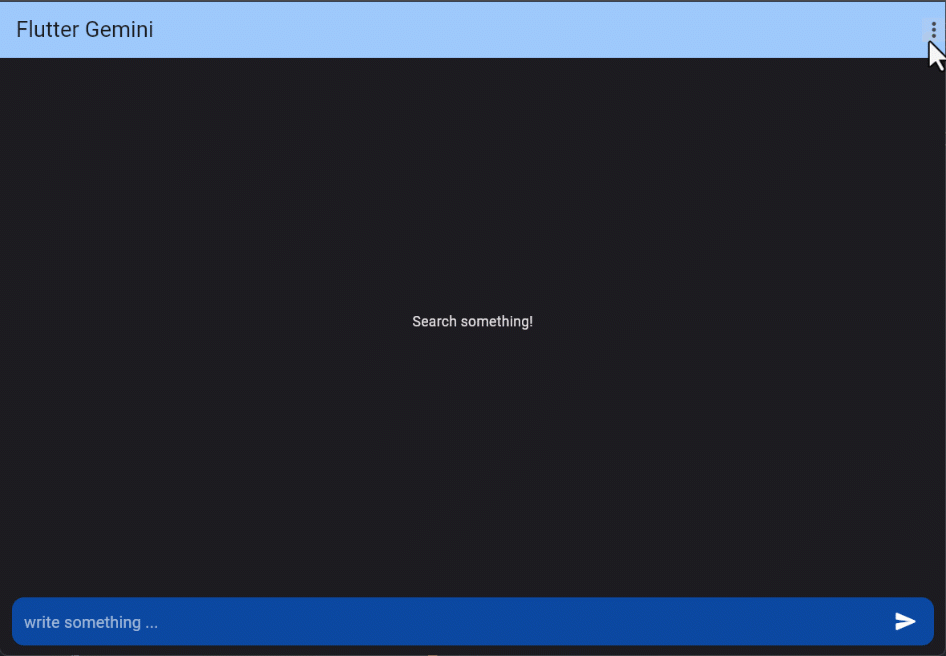Flutter Gemini
Google Gemini is a set of cutting-edge large language models (LLMs) designed to be the driving force behind Google's future AI initiatives.
This package provides a powerful bridge between your Flutter application and Google's revolutionary Gemini AI. It empowers you to seamlessly integrate Gemini's capabilities into your app, unlocking possibilities for building innovative, intelligent, and engaging experiences that redefine user interaction.
Features
Getting started
To use the Gemini API, you'll need an API key. If you don't already have one, create a key in Google AI Studio. Get an API key.
online demo
https://babakcode.github.io/flutter_gemini
Initialize Gemini
For initialization, you must call the init constructor for Flutter Gemini in the main function.
void main() {
/// Add this line
Gemini.init(apiKey: '--- Your Gemini Api Key ---');
runApp(const MyApp());
}
Now you can create an instance
Content-based APIs
Text-only input
This feature lets you perform natural language processing (NLP) tasks such as text completion and summarization.
final gemini = Gemini.instance;
gemini.text("Write a story about a magic backpack.")
.then((value) => print( value?.output )) /// or value?.content?.parts?.last.text
.catchError((e) => print(e));

Text-and-image input
If the input contains both text and image, You can send a text prompt with an image to the gemini-pro-vision model to perform a vision-related task. For example, captioning an image or identifying what's in an image.
final gemini = Gemini.instance;
final file = File('assets/img.png');
gemini.textAndImage(
text: "What is this picture?", /// text
image: file.readAsBytesSync(), /// image
)
.then((value) => log(value?.content?.parts?.last.text ?? ''))
.catchError((e) => log('textAndImageInput', error: e));

Multi-turn conversations (chat)
Using Gemini, you can build freeform conversations across multiple turns.
final gemini = Gemini.instance;
gemini.chat([
Content(parts: [
Parts(text: 'Write the first line of a story about a magic backpack.')],
role: 'user'),
Content(parts: [
Parts(text: 'In the bustling city of Meadow brook, lived a young girl named Sophie. She was a bright and curious soul with an imaginative mind.')],
role: 'model'),
Content(parts: [
Parts(text: 'Can you set it in a quiet village in 1600s France?')],
role: 'user'),
])
.then((value) => log(value?.output ?? 'without output'))
.catchError((e) => log('chat', error: e));

Count tokens
When using long prompts, it might be useful to count tokens before sending any content to the model.
final gemini = Gemini.instance;
gemini.countTokens("Write a story about a magic backpack.")
.then((value) => print(value)) /// output like: `6` or `null`
.catchError((e) => log('countTokens', error: e));
Model info
If you GET a model's URL, the API uses the get method to return information about that model such as version, display name, input token limit, etc.
final gemini = Gemini.instance;
gemini.info(model: 'gemini-pro')
.then((info) => print(info))
.catchError((e) => log('info', error: e));
List models
If you GET the models directory, it uses the list method to list all of the models available through the API, including both the Gemini and PaLM family models.
final gemini = Gemini.instance;
gemini.listModels()
.then((models) => print(models)) /// list
.catchError((e) => log('listModels', error: e));
Unimplemented Methods
embedContents, batchEmbedContents, streamGenerateContent,
// In newer version will be added